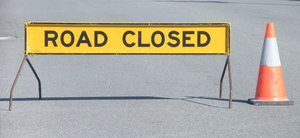According to a recent analysis, the state’s highway system has a $250 million operation shortfall for next year. The Massachusetts Bay Transportation Authority (MBTA) is also facing a near $150 million shortfall, according to the Boston Globe.

The Dukakis Center for Urban and Regional Policy at Northeastern University conducted the analysis. And this analysis doesn’t even include money for repair or replacement needs to improve any transportation methods. What was analyzed were the costs for running the system. And without a well-funded, well-run system, we can all expected fare hikes, tax increases and even some serious cuts in the near future. Our Quincy personal injury attorneys understand that these funds are critical in helping to keep our roadways and public transportation safe. Cost cutting too often increases the risk of serious or fatal accidents.
The recent analysis was conducted to help to get a handle on the state of transportation in Massachusetts. It took a closer look at the financial state of out transportation system and rated it based on regional equity, infrastructure health and accessibility. The results aren’t too promising. With the transportation department in the hole, it’s our roads and our safety that are going to be compromised.
More than 25,000 of the close to 43,000 people who were killed on U.S. roadways in 2003 were killed when their vehicles left their lane and crashed. Sometimes, these accidents involve cars crossing over the center line. Other times, they involve vehicles crossing over onto the shoulder and flipping, dropping down a slope of even colliding with other objects on the side of the road. Many times, these kinds of accidents are the result of poor road design and poor road maintenance. These “dangerous roads” are increasingly an issue as our transportation infrastructure continues to age.
Hazardous highways are one of the leading causes of auto accidents, leading to injuries and fatalities on the road.
Dangerous Roads:
-Poor Maintenance.
-Failing to Make Shoulders Clearly Visible.
-Dangerous Drop-Offs.
-Obstruction in Visibility.
-Improper Construction.
-Faulty Design.
-Poorly Placed Roadway Signage.
-Defective, or Completely Missing Guardrails.
-Improper Draingage to Keep Water Off of the Roadway.
-Inadequate Skid Resistance on Pavement.
-Faulty Adaptation to Changing Conditions.
About 20 percent of all accidents involve a single car veering off of the road. In many of these cases, these vehicles will rollover or will slam into a fixed object. In these cases, government officials are likely to argue that it was your fault — driver error. The truth of the matter is that it could be the road’s fault, or the design (or lack thereof) that’s to blame.
Contacting an experienced attorney may be one of the only way that you can prove your case. An attorney can help you to get to the bottom of roadway conditions and accident factors before it’s too late.
If you or your young driver has been injured or killed in an accident, contact Jeffrey S. Glassman for a free and confidential consultation to discuss your rights. Call (617) 777-7777.
More Blog Entries:
Boston Traffic Watch: A Look at Toyota’s Driverless Cars, Boston Car Accident Lawyer Blog, November 17, 2012
DOT Joins FOX’s Glee to Target Young Distracted Drivers, Boston Car Accident Lawyer Blog, November 13, 2012
 Boston Car Accident Lawyer Blog
Boston Car Accident Lawyer Blog

